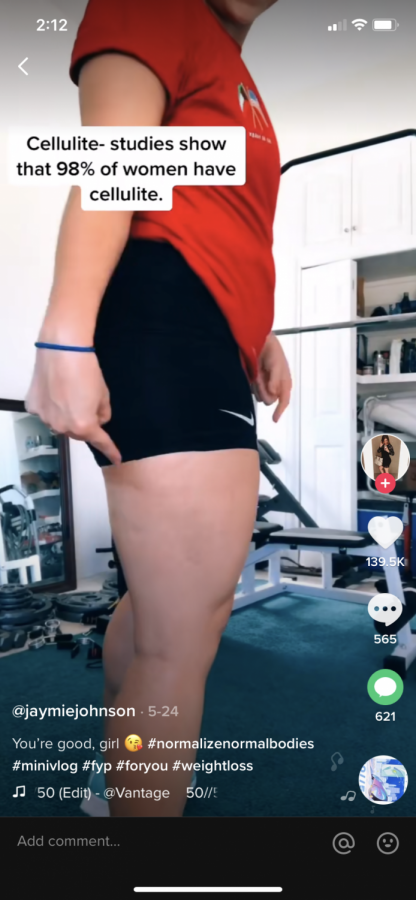Tik Tok brings body positivity, confidence
A TikTok shows a woman showing her cellulite, stating how normal it is for women to have it.
When TikTok first released, I thought it would be just another app that made myself and others feel more conscious of our bodies. However, I quickly discovered that TikToks are made to be relatable, and many creators took on the challenge of breaking down the impossible expectations that young girls and boys have for their bodies.
Much of the reason for this positivity is at the credit of the creators of TikTok. According to the TikTok website, there are policies that restrict ads regarding weight loss for younger viewers, and any ads that show unhealthy habits for weight loss. Also, searches for content that may promote unsafe actions related to body image will redirect users to resources and hotlines from the National Eating Disorder Association. Thanks to the thoughtfulness of the creators, the largely adolescent audience will be exposed to less negative content about body image.
As dances and intentions of going “viral” became more popular, many creators also took it upon themselves to ensure that viewers wouldn’t get caught up in comparing themselves to the people in videos that get a lot of views. For example, fitness creators may show themselves with their leggings pulled above their belly button versus their leggings sitting on their waist. There was also a trending hashtag dedicated to showing your exposed stomach to prove to younger viewers that it’s normal to not have a flat stomach. While there are creators who suggest unhealthy habits to lose weight, such as chewing gum instead of eating, I more often see duets of people discrediting these claims rather than the negative content itself.
I really appreciate that an app made for kids and teenagers prioritizes them feeling confident in their bodies and knowing how to have a healthy relationship with food and body image. By educating others and fostering body positivity on the app, we can hope to control the amount of negativity young adults face when on their phone, and create a truly safe way for students to interact with social media.

Sophie Nieder is a senior at Washington High School. She is the co-Editor-in-Chief for The Advocate. In her free time, she likes to read, go outside and...






